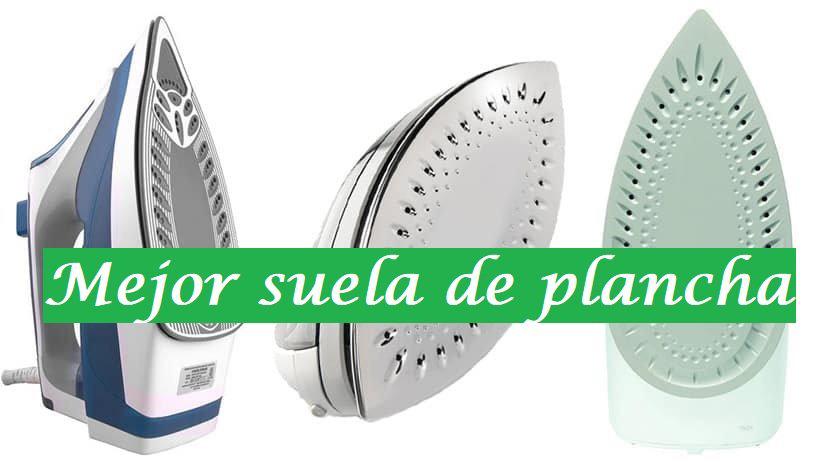By clothing-bag, 03/02/2022
What is the best material for the soleplate of the iron
When choosing the iron or ironing center it is very important that you look at the material of the sole. It is the part that will have direct contact with the garments and you need it to slide smoothly and distribute the steam evenly. Of course, it is also important that it is scratch resistant.
To choose the best iron or ironing center, we invite you to consult our comparator with the results of more than a hundred irons and ironing centers:
COMPARE IRONERS AND IRONING CENTERS
Different types of sole
Soles are generally made from three types of materials: aluminum, ceramic, and stainless steel. Within these three types there is an endless amount of finishes, such as the laser finish or the ultra-resistant sapphire finish, among others. In addition, manufacturers use commercial names of their invention that make it even more difficult to distinguish between one type of sole and another. There are soles made of other materials, such as titanium, non-stick and more, but they are less common.
Each material has its weight, its thermal conductivity, its resistance to scratches and its smoothness when passed over the surface, all of which affect the ironing result. We explain the main characteristics, advantages and disadvantages of each material.
aluminum soles
Aluminum soles have in their favor that they are the cheapest and also the lightest. They heat up and cool down quickly, very comfortable if we don't like to wait and we usually iron a piece of clothing before going to work, to give it the final touch.
Aluminum soleplates, if used as they are, have several disadvantages, which our analyzes have highlighted: they glide poorly, scratch easily and stick to clothing, which can lead to stains, burnt bits of fabric, etc. rust etc Also, due to rapid heating, it is more likely to leave burns on garments.
For this reason, aluminum is often applied different coatings for greater safety.

ceramic soles
Ceramic coating is quite common today and offers excellent glide.
Ceramic is a good conductor of heat and helps distribute it evenly over the entire surface. It's also non-stick and easy to clean with a damp cloth. Another notable advantage is that it prevents the formation of static electricity.
In any case, there are no 100% ceramic soleplates, but rather a ceramic coating that is applied to a soleplate made of stainless steel, aluminum or an alloy of both.
stainless steel soles
The stainless steel sole is the most used material.
Stainless steel is cheaper than ceramic or titanium coated sheets.
This material resists corrosion well and is a better conductor of heat than aluminum, although it takes longer to heat up and cool down and is heavier.
It stands out for its greater durability, optimal sliding and better resistance to scratches.
In its "must" it should be noted that this material is prone to staining during ironing, but the damaged soleplate can be easily cleaned with a damp cloth.
What else should you value in the sole?
In addition to the material of the sole, it is important to look at its size and shape.
Size. The larger the soleplate, the less time it will take to iron, as it will cover more surface. In addition, a large soleplate usually has a high number of holes through which the steam comes out, which is another plus point.
Way.
additional sole
Some models have an additional sole. It is useful, but ironing will consume more electricity. In addition, you have to be very careful when putting on and taking off the sole so as not to burn yourself.
The soleplate is attached to the original soleplate and allows steam ironing at lower temperatures. Normally, irons only produce steam when they are very hot (position ᵒᵒᵒ or maximum); for ironing synthetic fabrics, wool, silk, etc. There is no choice but to iron without steam, unless you have this additional soleplate that serves as insulation while letting it through.
Related Articles